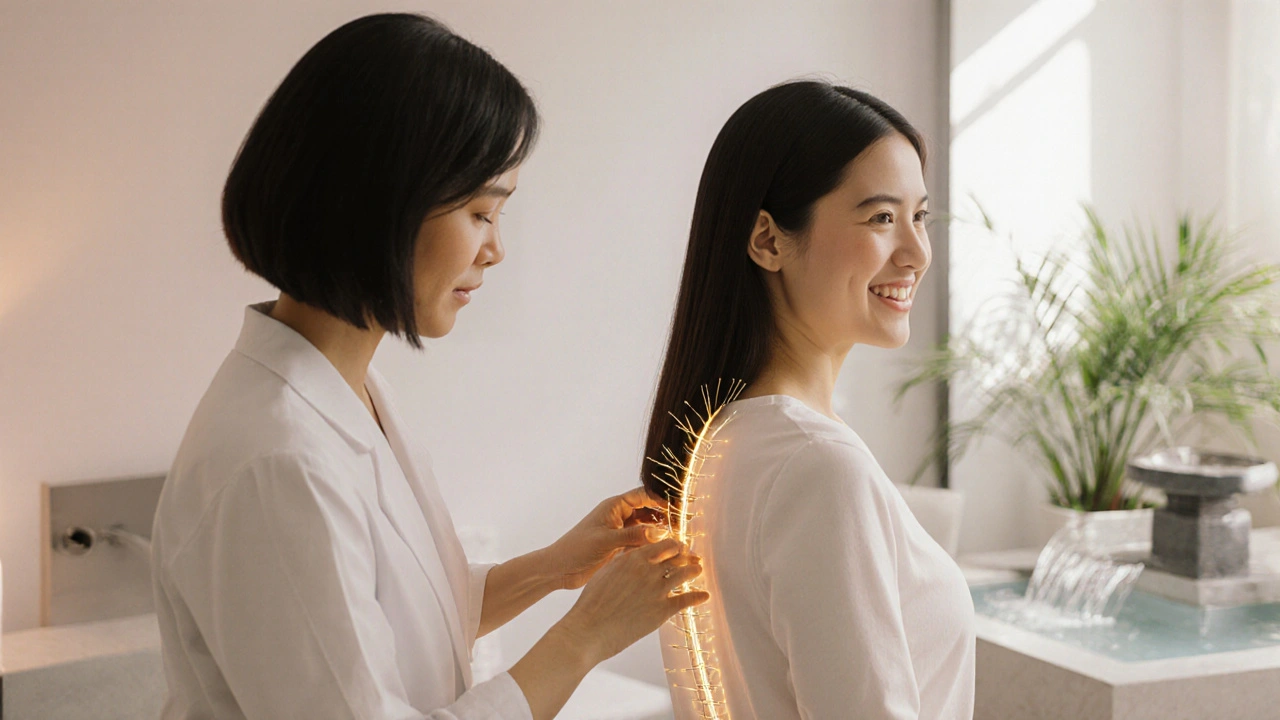When you hear Traditional Chinese Medicine, a millennia‑old system that blends herbs, bodywork, and lifestyle advice to keep the body in balance. Also known as TCM, it treats health issues by targeting patterns rather than isolated symptoms. Chinese herbs are the plant‑based core of many formulas, working together for synergistic effects. Acupuncture uses fine needles to stimulate points along energy pathways, aiming to restore proper flow.
Traditional Chinese Medicine covers three big pillars: herbal therapy, acupuncture, and dietary guidance. The first pillar, herbal therapy, relies on blends of Chinese herbs like ginseng, licorice, and dang gui, each chosen for its specific properties and how it supports the whole formula. The second pillar, acupuncture, requires skilled practitioners who know the meridian map and can apply just the right needle depth to calm excess heat or boost deficient energy. The third pillar, dietary therapy, advises foods that fit the individual’s constitution – for example, warm soups for cold‑type people or cooling teas for those with too much heat.
Modern health seekers are turning to TCM for real reasons. Herbal supplements such as Jiaogulan and Cudweed are studied for their adaptogenic and anti‑inflammatory benefits, fitting neatly into the ancient herb‑formula approach. Products like Septilin combine several herbs into a single tablet that aims to boost immunity, echoing classic TCM strategies of multi‑component synergy. These examples show how TCM’s holistic mindset can complement modern medicine, especially when users look for natural ways to manage stress, support immunity, or balance chronic conditions.
Another key idea in TCM is the concept of “pattern differentiation.” Instead of labeling a condition strictly as hypertension or arthritis, practitioners identify underlying patterns – such as “Liver fire rising” or “Kidney yin deficiency” – and then prescribe a tailored mix of herbs, acupuncture points, and lifestyle tweaks. This personalized approach matches today’s trend toward individualized healthcare and explains why TCM remains relevant across ages and cultures.
Below you’ll find a curated collection of articles that dig deeper into specific herbs, supplement reviews, and practical tips for integrating Traditional Chinese Medicine into everyday life. Whether you’re curious about the science behind Jiaogulan, want to compare herb‑based immune boosters, or need guidance on safe online sourcing, the posts ahead will give you actionable insights and clear directions.
Posted by
Paul Fletcher
5 Comments

Discover how acupuncture can boost hormone balance, blood flow, and stress relief to support natural conception and complement IVF, with protocols, science, and FAQs.
read more